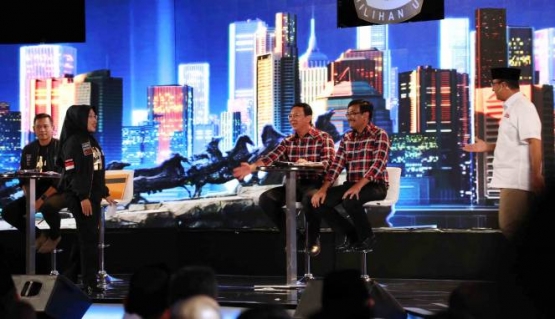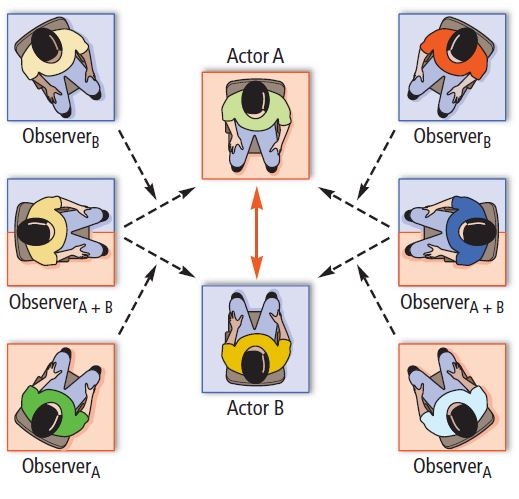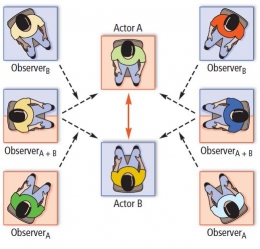Mengkombinasikan pengetahuan berdasarkan teori-teori pengolahan informasi, efek urutan, saliensi perseptual, dan natur televisi, sambil mengamati gambar-gambar berikut ini; mengubah (atau, anggap saja: menyegarkan) urutan duduk/berdiri pasangan calon gubernur-wakil gubernur merupakan pilihan yang layak dipertimbangkan oleh Panitia Penyelenggara Debat Cagub-Cawagub DKI Jakarta 2017.

Referensi
Alvarez, R. M., Sinclair, B., & Hasen, R. L. (2006). How much is enough? The "ballot order effect" and the use of social science research in election law disputes. Election Law Journal, 5(1), 40-56. doi:10.1089/elj.2006.5.40
Aronson, E., Wilson, T. D., & Akert, R. M. (2013). Social psychology (8th ed.). Pearson Education, Inc.
Drapper, S. W. (2016). The Hawthorne, Pygmalion, placebo and other effects of expectation. http://www.psy.gla.ac.uk/~steve/hawth.html
Ebbinghaus, H. (1885/1913). Memory: A contribution to experimental psychology. New York: Dover.
Goman, C. K. (2011, October 12). GOP seating arrangement changed the debate. http://www.forbes.com/sites/carolkinseygoman/2011/10/12/gop-seating-arrangement-changed-the-debate/#5c06d8d8625c
Jun, B., & Min, H. (2017). What creates heterogeneity in ballot order effects? Evidence from Korea's local elections of education superintendent. Electoral Studies, 46, 1-14. doi:10.1016/j.electstud.2016.12.003
Kim, N., Krosnick, J., & Casasanto, D. (2013). Moderators of candidate name order effects in elections: An experiment. Stanford University.
King, A., & Leigh, A. (2009). Are ballot order effects heterogeneous? Social Science Quarterly, 90(1), 71-87. doi:10.1111/j.1540-6237.2009.00603.x









